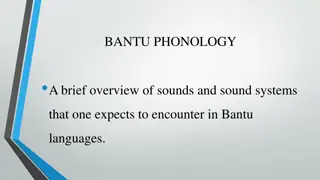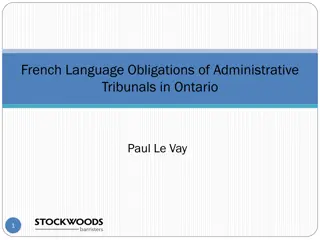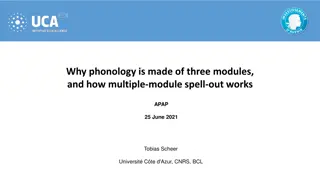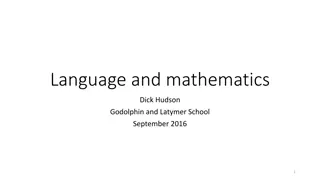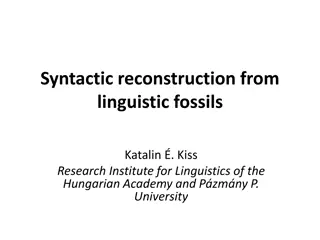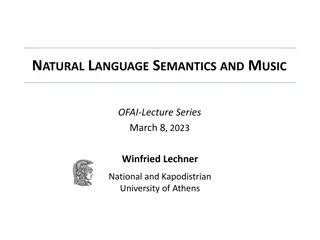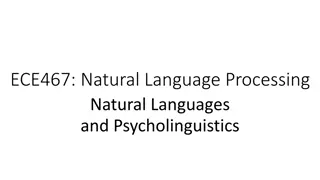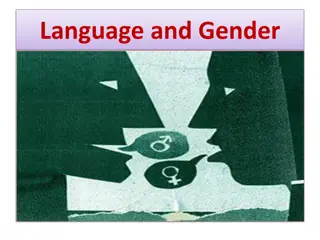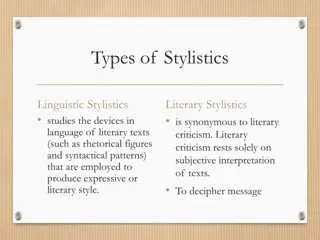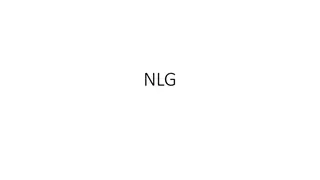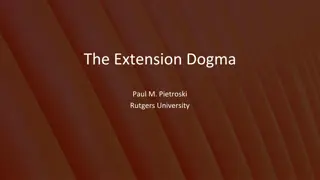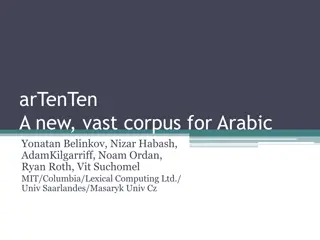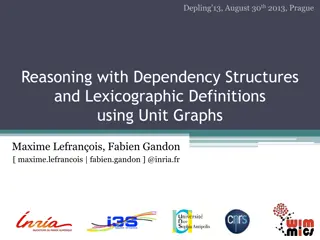Various Definitions of Language Throughout Linguistic History
Different linguists and scholars have offered various definitions of language over time. Sapir (1921) emphasized language as a method of communicating ideas, emotions, and desires through voluntary symbols. Bloch and Trager (1942) focused on the social aspect of language as a system of vocal symbols for group cooperation. Hall (1968) highlighted language as an institution for human communication using oral-auditory symbols. These definitions differ in their perspectives on communication, social function, and the arbitrary nature of language symbols.
Download Presentation

Please find below an Image/Link to download the presentation.
The content on the website is provided AS IS for your information and personal use only. It may not be sold, licensed, or shared on other websites without obtaining consent from the author. Download presentation by click this link. If you encounter any issues during the download, it is possible that the publisher has removed the file from their server.
E N D
Presentation Transcript
According to Sapir (1921:8) Language is a purely human and non-instinctive method of communicating ideas, emotions and desires by means of voluntarily produced symbols.
The definition suffers from several defects. It seems clear that there is much that is communicated by language which is not covered by any of them. On the other hand, there are many systems of voluntarily produced symbols that we only count as languages in what we feel to be an extended or metaphorical sense of the the word language . For example, is now referred to by means of the expression body language which makes use of gestures, postures, eye-gaze.etc.
In their Otline of Linguistic Analysis Bloch and Trager wrote (1942:5) A language is a system of arbitrary vocal symbols by means of which a social group co-operates.
This definition makes no appeal to the communicative function of langauge. Instead it puts al the emphasis upon its social function. The Bloch and Trager s definition differs from Sapir s in that it brings in the property of arbitrariness and explicitly restricts language to spoken language. There is a close connection between language and speech. One cannot speak without using language but one can use languages without speaking. Speech is prior to writing.
In his Essay on Language, Hall (1968:158), tells us language is The institution whereby humans communicate and interact with each other by means of habitually used oral-auditory arbitrary symbols.
In this definition, both communication and interaction are introduced. Oral-auditory can be taken to be similar to vocal , differing from it only in that oral-auditory makes reference to the hearer as well as to the speaker. Hall, like Sapir, treats language as a purely human institution; and the term institution makes explicit the view that the langauge that is used by a particular society s culture. The property of arbitrariness is mentioned here.
Robins (1979:9-14) does not give a formal definition of language. He notes that languages are symbol systems almost wholly based on pure or arbitrary convention, but lays special attention on their flexibility and adaptability.
In this definition, a habit system may change overtime. New words can enter the vocabulary of any language at any time.
Chomsky in Syntactic Structures (1957:13) points out I will consider a langauge to be a set (finite or infinite) of sentences, each finite in length and constructed out of a finite set of elements
According to Chomsky, all natural, in either spoken or their written form, are languages in the sense of his definition. Since a) each natural language has a finite number of sounds in it, and b) Although there may be infinitely many distinct sentence in language, each sentence can be represented as a finite sequence of these sounds (or letters).
REFERENCES Bloch, B and Trager, G.L. 1942. Outline of Linguistic Analysis. Baltimore: Linguistic Society of America, Waverly Press. Chomsky, Noam. 1957. Syntactic Structures. The Hague: Mouton. Hall, R.A. 1968. An Essay on Language. Phiiladelphia and New York; Chilton Books. Lyons, John. 1983. Language and Linguistics. Cambridge: Cambridge university Press. Sapir, Edward.1921. Language. New York: Harcourt Brace.




